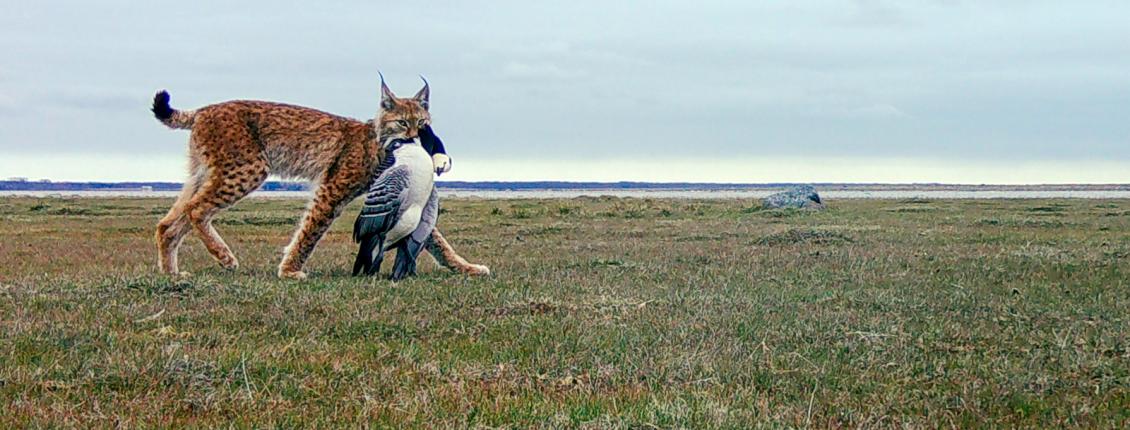June 17, 2025
Nele Sõber, Keskkonnaamet
Eurasian lynx caught on the nest camera of a Northern lapwing
The coastal meadows of Matsalu National Park are important nesting areas for meadow waders, with the small predators hunting for prey on the coastal meadows being their biggest enemies. The greater the number of trees and shrubs growing in coastal meadows, the greater the chance that foxes, European badgers and, in some cases, jackals will sneak over to the ground nests and feast on nesting birds’ eggs.
To improve the habitats of meadow waders, we will be restoring 20 coastal meadows in the course of the project while also hunting small predators on five coastal meadows. Ornithologists at the University of Tartu will be using trail cameras to monitor the hatching success rate of meadow waders to determine the impact of restoring the coastal meadows and controlling predators. Trail cameras placed in the Matsalu meadow have proven themselves to be invaluable tools for gathering exciting and useful information while causing minimal disruption. This includes data on the presence of small predators and their plundering of nests.
While the cameras have captured images of birds typically nesting or feeding in the area, as well as predators looking for bird nests, this spring a trail camera installed near the nest of a northern lapwing left viewers speechless when it capture footage of a gorgeous lynx passing by carrying a brent goose in its mouth.
In theory, the presence of a large predator could create a backdrop of fear that would deter smaller predators from entering the area. Furthermore, the presence of large predators could have a positive effect on nesting birds as they have no interest in bird nests. However, this effect is not visible in the case of the Matsalu coastal meadow: After the lynx, both the jackal, European badger and a fox passed in front of the cameras.
Perhaps the lynx was simply a visitor walking through the coastal meadow.
